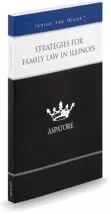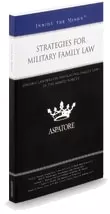Therefore, the role of the mental health professional is somewhat different in the forensic setting. The expert needs to: be clear on the overall purpose of the evaluation, know whether the evaluation will be referenced against a legal standard, understand who the “client” is, be clear on the nature of the final written product, and understand that they may indeed be called to testify regarding their findings in court. The forensic evaluation should address relevant mental and emotional functioning of the parties, the relevant legal standard, and how these two areas relate to each other. The evaluator needs to understand that unlike therapeutic setting where patient is likely reporting symptoms or behaviors accurately for the purpose of self-healing, the motives of a person being evaluated are often to cover up any perceived weaknesses. These reasons point to why the selection of someone experienced in the field of custody evaluations is key. Not every psychologist or psychiatrist is truly qualified for this niche.
Additionally, beware of selecting an expert who has been treating a member or members of the family. This can often blur the lines for the expert as to whether the primary goal is to help or to evaluate. It may even cause concerns that the evaluation is harming the patient and the evaluator then seeks to temper the objective results. It is hard to blame a dual role therapist as it is in their nature to want to help their patients, so be wary. Finally, such dual roles often confuse the patient serving only to hamper future treatment.
A custody evaluator may suggest or sometimes at the request of a client or opposing party one may choose to undergo psychological testing. More in this realm is not necessarily better. At a minimum, make certain the style of test employed is both relevant and to the extent possible, reliable. Keep in mind that virtually none of these were designed with any form of legal standard in mind. However, with that said, in the right setting they can prove useful.
Below are a few of the common psychological tests and standards:
DSM-IV-TR: This is short hand for the Diagnostic and Statistical Manual of Mental Disorders Fourth Edition Text Revision. An updated version of the DSM, now the DSM-V or Fifth Edition has been published as of May 18, 2013. The DSM essentially provides standard criteria and standard language for the diagnosis of various mental illnesses and is likely what your psychological expert will reference in making a diagnosis. One of the major goals of the DSM-IV and DSM-V has been to increase the diagnostic reliability of those who use it. The DSM divides psychiatric diagnoses into five axes or aspects of disorder. Common Axis I disorders are depression, anxiety disorders, autism, and anorexia. Axis II disorders are personality disorders such as obsessive-compulsive, paranoid, borderline, and narcissistic. Axis III disorders include brain injuries and other medical conditions which may aggravate existing disorders.
Minnesota Multiphasic Personality Inventory (MMPI-2): This is the most frequently used personality test. It measures personality over a set of 10 scales based upon a national sample of 2,600 adults completed in 1989. Subsequently an MMPI-A has been developed for those aged 14 to 18 and an updated MMPI known as the MMPI-2RF began use in 2008 with an increased number of hierarchical scales. One of the biggest criticisms of the test is that minorities tend to score roughly five points higher making it appear as if there is a greater presence of psychopathology in minorities. Still the MMPI-2 and MMPI-2RF are perceived to be more reliable than the original MMPI which was based off of a small sample of rural, white Minnesota farmers. Generally, the test requires a 6th grade reading level.
Rorschach Test: This is commonly known as the inkblot test. Subjects view inkblots and their perceptions are recorded and analyzed to examine the subject’s personality and emotional status. Common criticisms relate to reliability and the limited number of conditions which it accurately diagnoses. Further, the ten inkblot images are to some extent widely known and possibly skew the test’s results. Finally, Hermann Rorschach himself did not intend to use the test to examine personality, but rather diagnosis schizophrenia.
Million Clinical Multiaxial Inventory III (MCMI-III): This test was designed to provide information on diagnosing psychopathology and specific disorders in the DSM-IV. It is designed for those over 18 years of age with an 8th grade reading level. Also, keep in mind that it was developed using clinical populations, i.e. patients in psychiatric hospitals, although it seems to retain validity on non-clinical populations. The test contains twenty eight scales fourteen of which measure personality disorders (Axis II) and ten of which measure depression and anxiety, etc. (Axis I).
Thematic Apperception Test (TAT): The test has a patient view a series of pictures and then individual is then asked to tell a story about the content of the picture like what events led up to this photo, what is happening at the moment, and what the final outcome will be. The idea is that these stories produce less guarded responses and thus a greater insight into the personality of the subject. Criticisms of this test are that there is no widely used scoring system and test-retest reliability is often low. It also, at least in comparison to other tests, seems to generate low levels of accuracy with regard to clinical diagnoses.
Sentence Completion Test: Similar to the TAT it is a projective test where the subject completes a sentence from a provided stem. The length of the test varies but it is believed to show attitudes, beliefs, and motivations. The test can be interpreted through intuitive analysis or through a scoring system.
Again, know the strengths and weakness of the testing used in your case. To accomplish this one can simply ask the expert, and if you are the one hiring the expert try to make certain the results of your particular test are repeatable. This means that it is capable of producing the same results if done again under the same conditions. Typically in the psychological field, this means a reliability coefficient above .8.
Custody evaluations can also be used to help determine whether there is parental alienation or realistic estrangement. The difference between an estranged child and an alienated child is that an estranged child has grown apart from the parent for reasons that are reasonable and realistic. In contrast, an alienated child is the victim of one parent’s efforts, either conscious or unintentional, to destroy the child’s relationship with the other parent.
Keywords: Child Custody Evaluation, Parental Alienation, Realistic Estrangement





